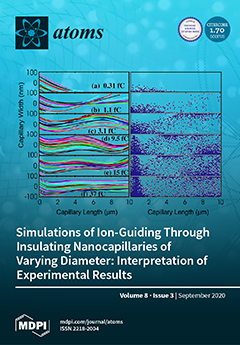This study focuses on the details of cascade repopulation of doubly excited triply open-shell C
and
states produced in 2–18 MeV collisions of C
with He. Such cascade calculations are necessary for the correct determination of the ratio
R of their cross sections, used as a measure of spin statistics [Madesis et al. PRL
124 (2020) 113401]. Here, we present the details of our cascade calculations within a new matrix formulation based on the well-known diagrammatic cascade approach [Curtis, Am. J. Phys.
36 (1968) 1123], extended to also include Auger depopulation. The initial populations of the
and
levels included in our analysis are obtained from the direct
single electron capture (SEC) cross sections, calculated using the novel three-electron close-coupling (3eAOCC) approach. All relevant radiative branching ratios (RBR) for
were computed using the COWAN code. While doublet RBRs are found to be very small, quartet RBRs are found to be large, indicating cascade feeding to be important only for quartets, consistent with previous findings. Calculations including up to third order cascades, extended to
using an
SEC model, showed a ∼60% increase of the
populations due to cascades, resulting, for the first time, in
R values in good overall agreement with experiment.
Full article





